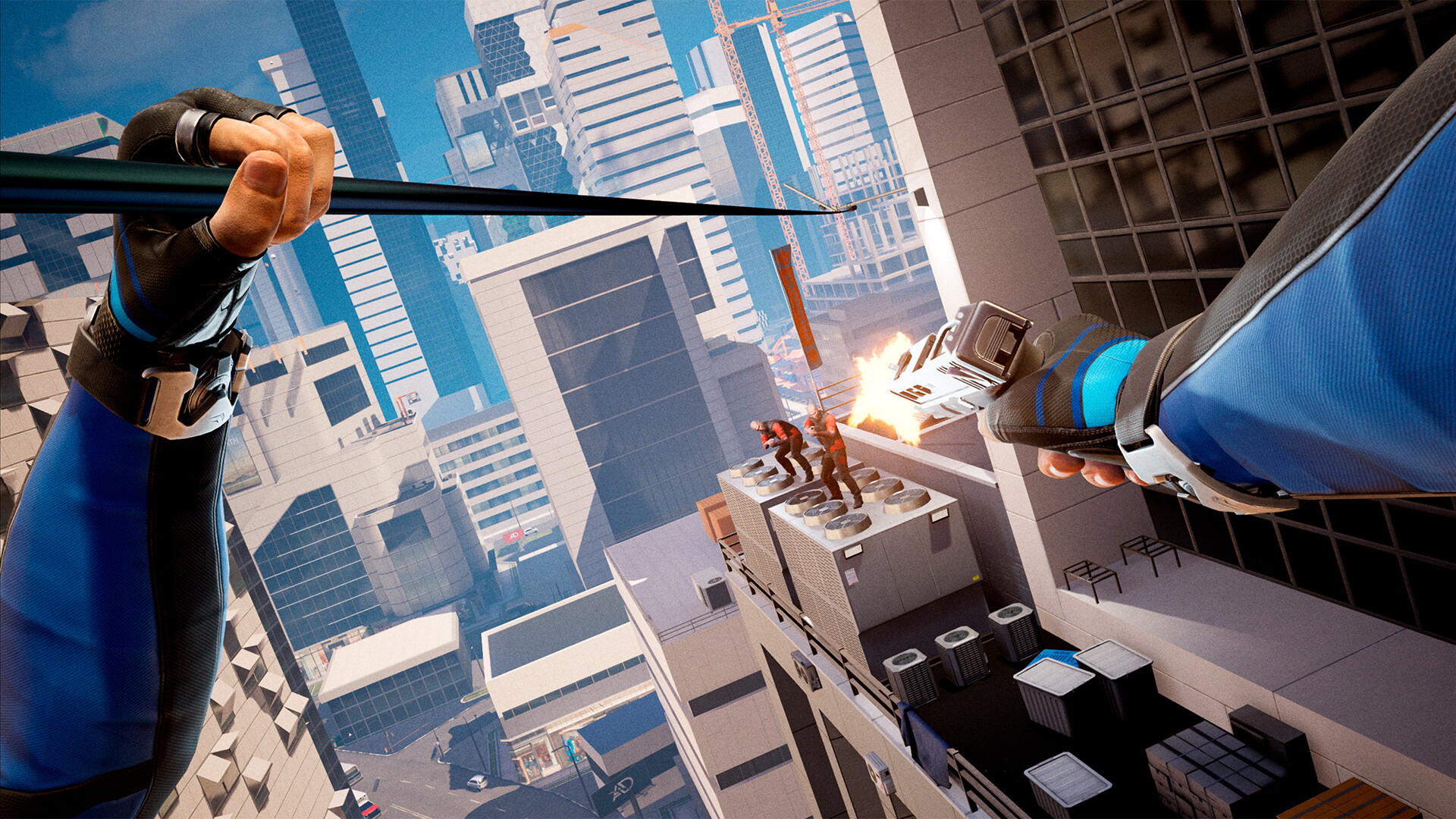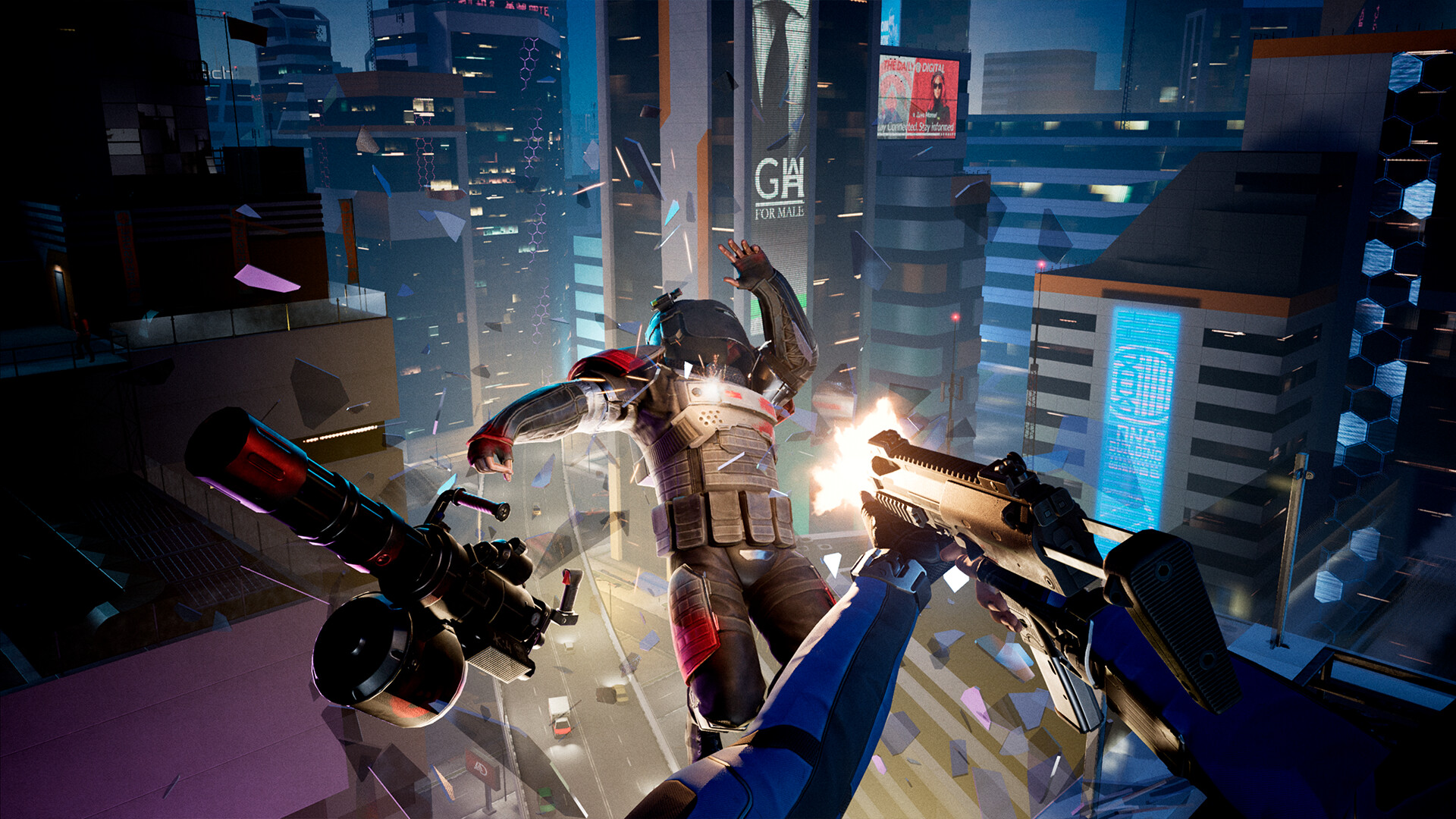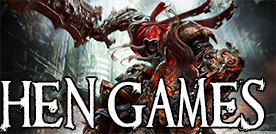
«Step into the shoes of a parkour spec-ops officer. Traverse your way through the rooftops and basements of dystopian Airon City – from slums to affluent skyscrapers. Deal with power shifts in gangs, dirty family feuds, corporate secrets, forbidden tech, and other obstacles to understand your past». We’ll see what it’s about.
Story and Gameplay:
This time we found the successor to the well-received VR parkour title STRIDE, that takes players on a high-octane journey through the neon-drenched alleys and soaring skyscrapers of Airon City. Developed by Joy Way, Stride: Fates builds upon the core mechanics of free-running, adding a narrative layer and objective-based missions. But does this new focus detract from the pure movement joy of the original, or does it create a compelling fusion of story and action? Let’s delve into the world of this game and see if it delivers a winning formula or not.
Let´s say that this game throws you into the shoes of a former resident of Airon City’s slums recruited by the elite SkyChase force. The narrative unfolds through environmental storytelling and disembodied voices that guide your missions. You’ll uncover a web of corporate intrigue, gang power struggles, and hidden technology, all while uncovering your own mysterious past. On the other hand, we must say that, the core gameplay, however, revolves around parkour. This game retains the intuitive and physically demanding movement system from its predecessor. You propel yourself forward by swinging your arms, grabbing ledges, and launching yourself across gaps. Mastering momentum is key, as a well-timed jump or wall-run can send you soaring through the environment. This freedom of movement is undeniably exhilarating, offering a sense of empowerment as you navigate Airon City’s rooftops and labyrinthine underbelly.

The story integrates with the gameplay through objective-based missions. These range from infiltrating enemy bases to retrieving stolen data, all while maintaining a smooth flow of parkour action. Dodging security guards, hacking terminals, and taking down enemies with your silenced pistol add a layer of complexity to the movement-focused gameplay. While the objectives themselves are fairly standard action fare, they provide a reason to explore Airon City’s diverse environments and test your parkour skills in different scenarios.
However, the narrative and the gameplay itself is a mixed bag. While the environmental details and overheard conversations offer intriguing glimpses into Airon City’s lore, the overarching story lacks a strong emotional core. The disembodied voices guiding you can feel detached and impersonal, failing to truly connect with the player. Additionally, the protagonist remains largely silent, further hindering emotional engagement. Also, sometimes we have problems with the execution of the movements, which go in slow motion and are erratic (in relation to what happens in the game), which makes the game even more complicated to play (especially on PC). We hope these bugs are fixed soon, as they make the experience difficult.

Graphics and Sound:
Graphically it presents a visually appealing world. Airon City is a dazzling mix of towering skyscrapers bathed in neon light and grimy underbelly slums. The art style leans towards a cel-shaded aesthetic, which keeps the visuals clean while maintaining a distinct look. However, the level of detail can be inconsistent at times. While some environments boast impressive views and intricate details, others appear more simplistic. On the other hand, the modeling of the weapons and characters is quite well done (and we say this in relation to the VR games on the market).
The sound design is functional but not particularly remarkable. In this sense, the music provides a decent action-oriented soundtrack that complements the fast-paced gameplay. However, environmental sounds occasionally feel muted, and the sound effects for weapons are not always so well done. For it´s part, the voice acting is uneven, with some characters delivering convincing performances while others fall flat.

Conclusions:
Stride: Fates is a game with undeniable potential. The core parkour mechanics are as satisfying and exhilarating as ever, offering a truly unique VR experience. The addition of a narrative layer and objective-based missions attempts to create a more engaging experience.
However, the story itself fails to fully capitalize on its potential. The lack of a strong emotional core and a quite silent protagonist hinder player investment. While the objectives add some variety, they don’t significantly alter the core gameplay loop.
Ultimately, Stride: Fates is a game best suited for those who crave the pure joy of parkour in VR. If you’re looking for a deeply engaging narrative, you might be left wanting. However, if you’re willing to overlook the narrative shortcomings and some bugs (let´s hope they fix them), Fates offers a compelling world to explore and a movement system that will keep you coming back for more.
My Score is 7.0
